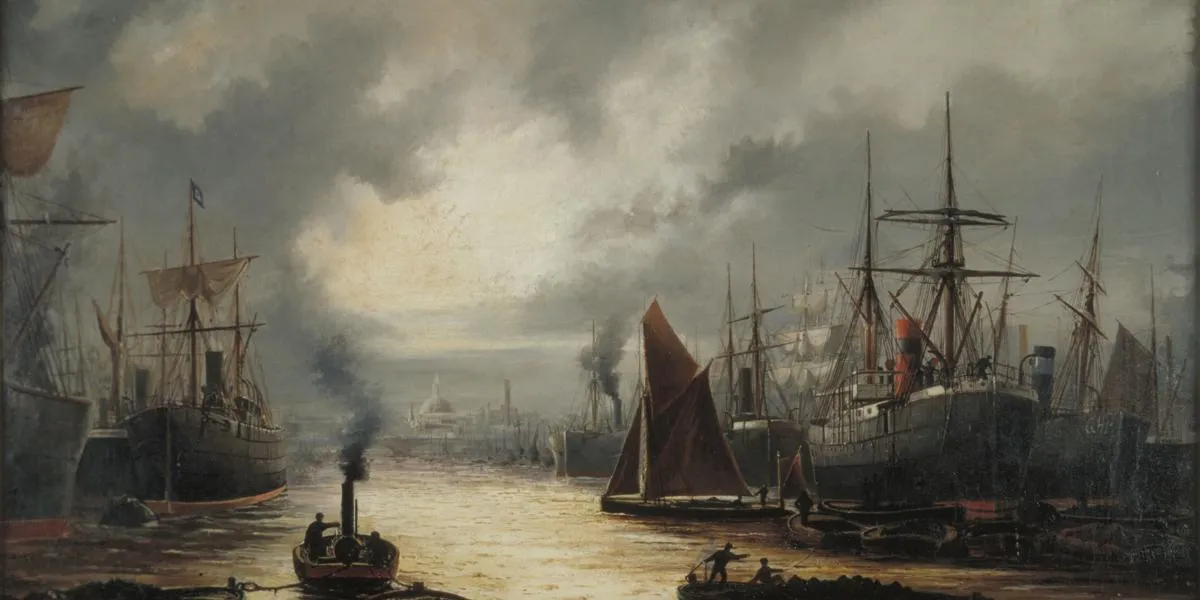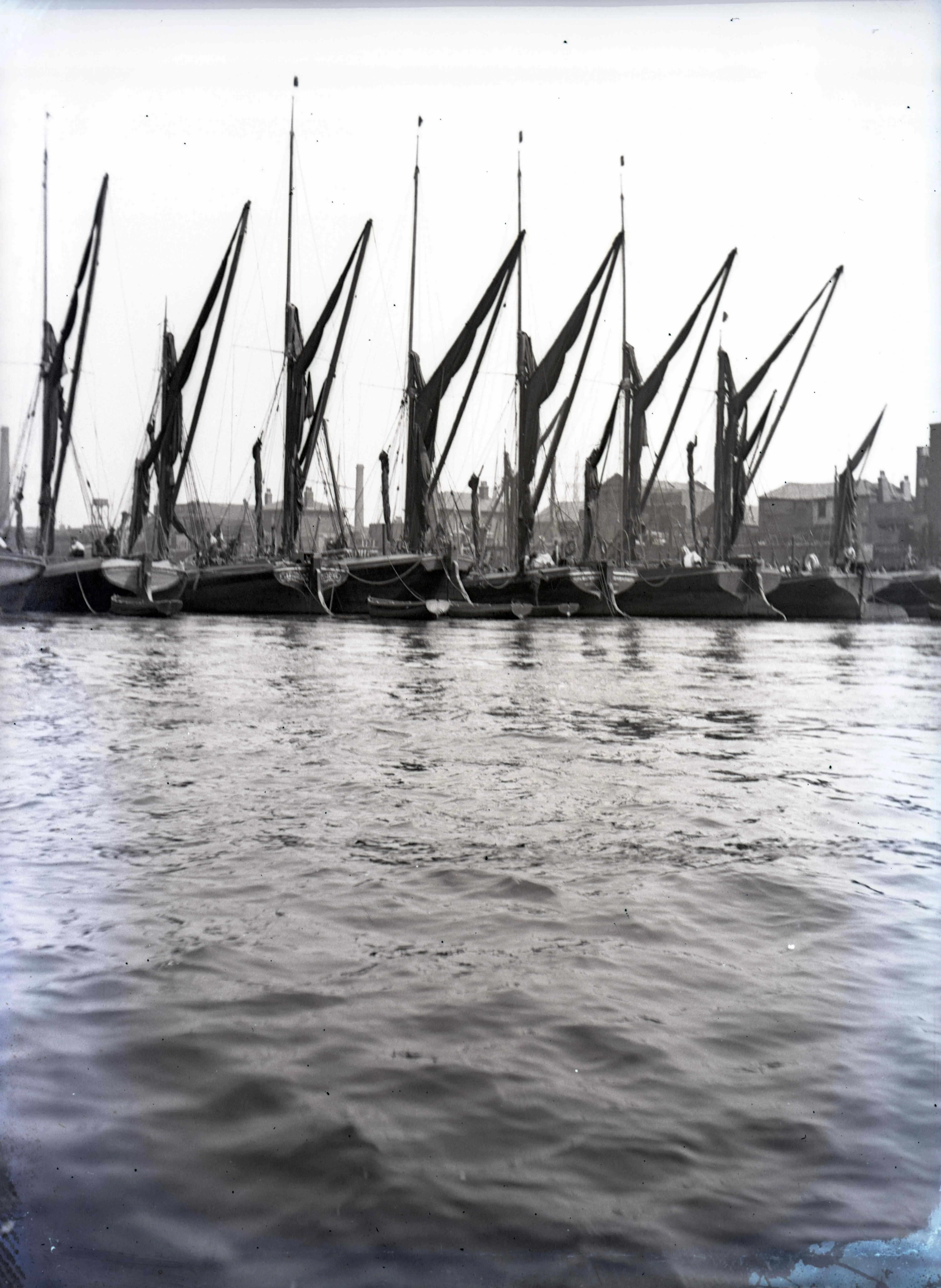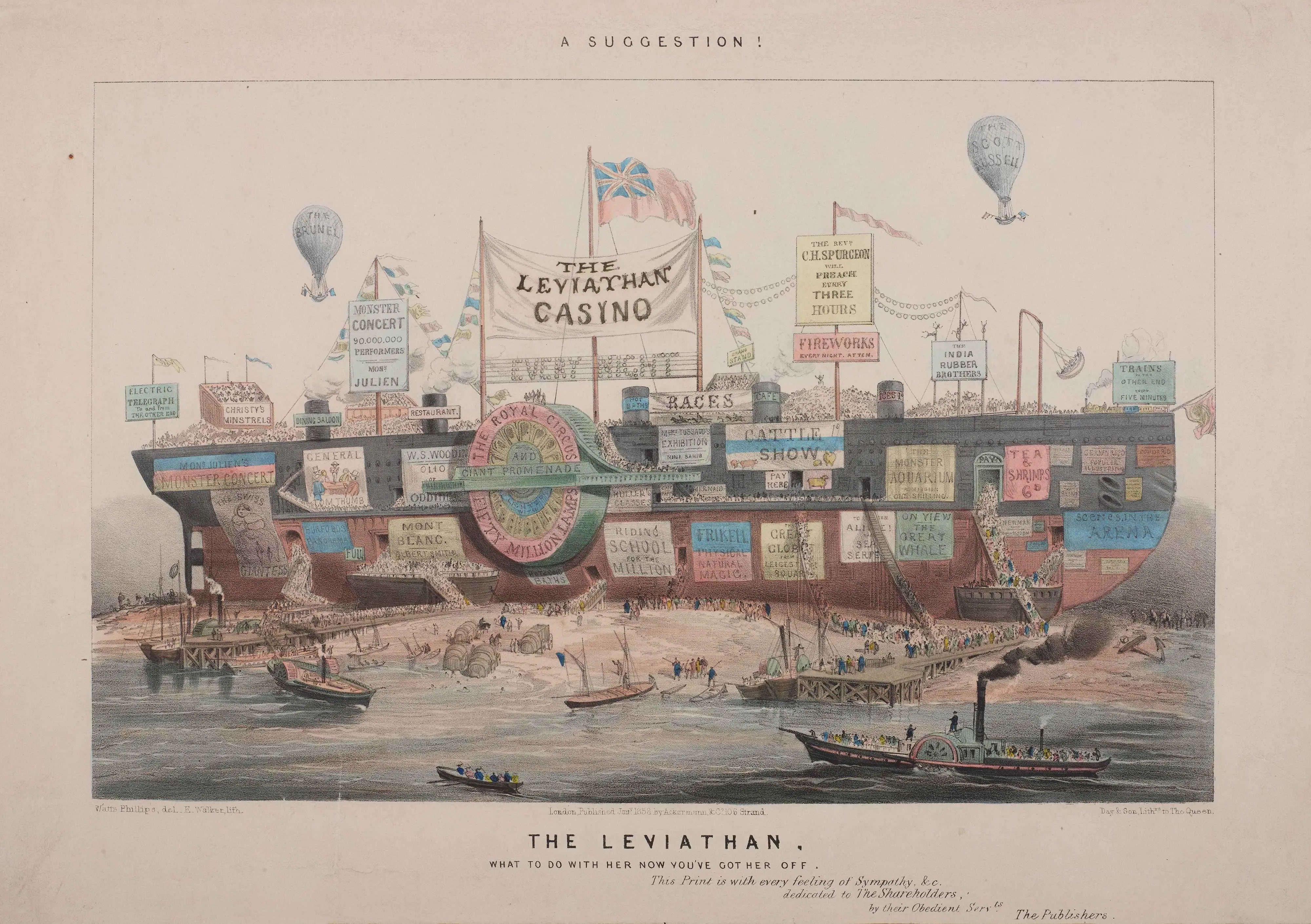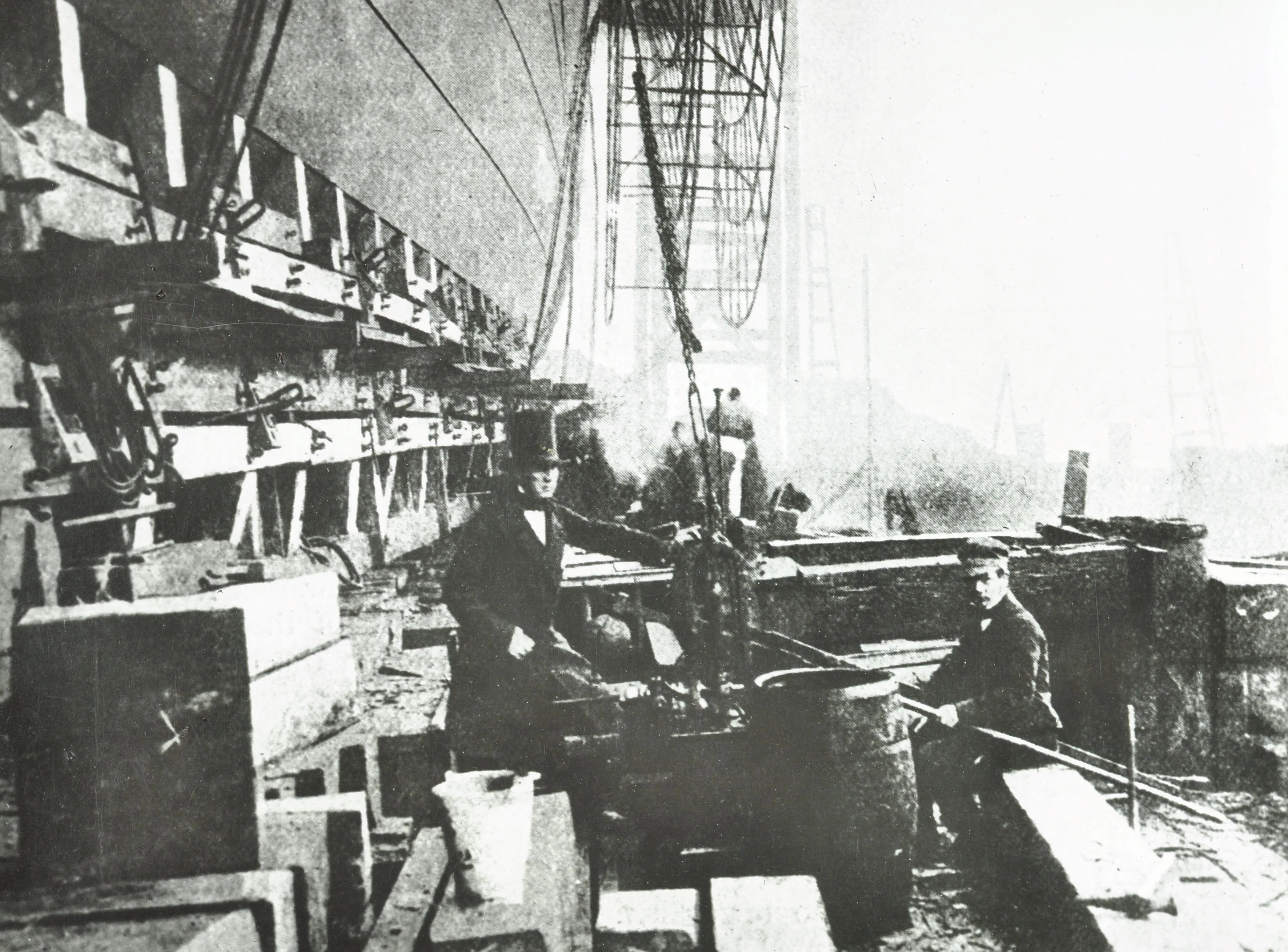The Victorian River Thames

Compared to its Victorian predecessor today's River Thames is remarkably empty.
A variety of watercraft
This 1892 oil painting by W J Baker is simply called ‘Pool of London’ and is part of the permanent collection at the Guildhall Art Gallery.

It shows a river view densely populated with a variety of watercraft. These range from large ocean-going steamships to the small boats that moved goods along the river. The ochre sail of a Thames barge is prominent. Unfamiliar to us, but once a familiar sight on the Thames and the entire east coast of England. Their small crews, sail configuration and flat bottoms made them well-suited for moving cargo. Larger barges were seaworthy and brought goods to London from domestic and European ports. Designs were adapted and refined during the nineteenth century in part driven by the fiercely competitive Thames Barge Races which began in the 1860s. This racing event still takes place today and is the longest running event for traditional sail in the world.

Shipbuilding
For centuries the Thames had been a centre of shipbuilding. London was central to the transition from sail to steam, with technology pioneered in its shipyards during the Victorian period.
However, these new ships needed space. The limitations of space contributed to the disastrous launch of the SS Great Eastern. Designed by Isambard Kingdom Brunel and built by John Scott Russell and Co at the Millwall Iron Works, the ship was 680 feet long and 83 feet at the beam. This was five times the size of the largest ship already in existence when it was ready for launch in 1857. Its huge size required the vessel to be launched sideways on and a first failed attempt on 3 November 1857 killed two people, with others injured, and the event was widely mocked in the press.
The name 'Leviathan' refers to a large aquatic creature but was commonly known as the Great Eastern. A contemporary satire by Watts Phillips makes suggestions of what could be available on board the ship given its colossal size, including a monster concert of 90, 000, 000 performers!

It was successfully launched in January 1858. In an image from the London County Council Photograph collection, Brunel is pictured by the ship a year before his death.

You can search for more images relating to shipping and the River Thames on the London Picture Archive.
Search the London Picture ArchiveDiscover more Victorian-related content in the Lost Victorian City exhibition.
Explore the Lost Victorian City